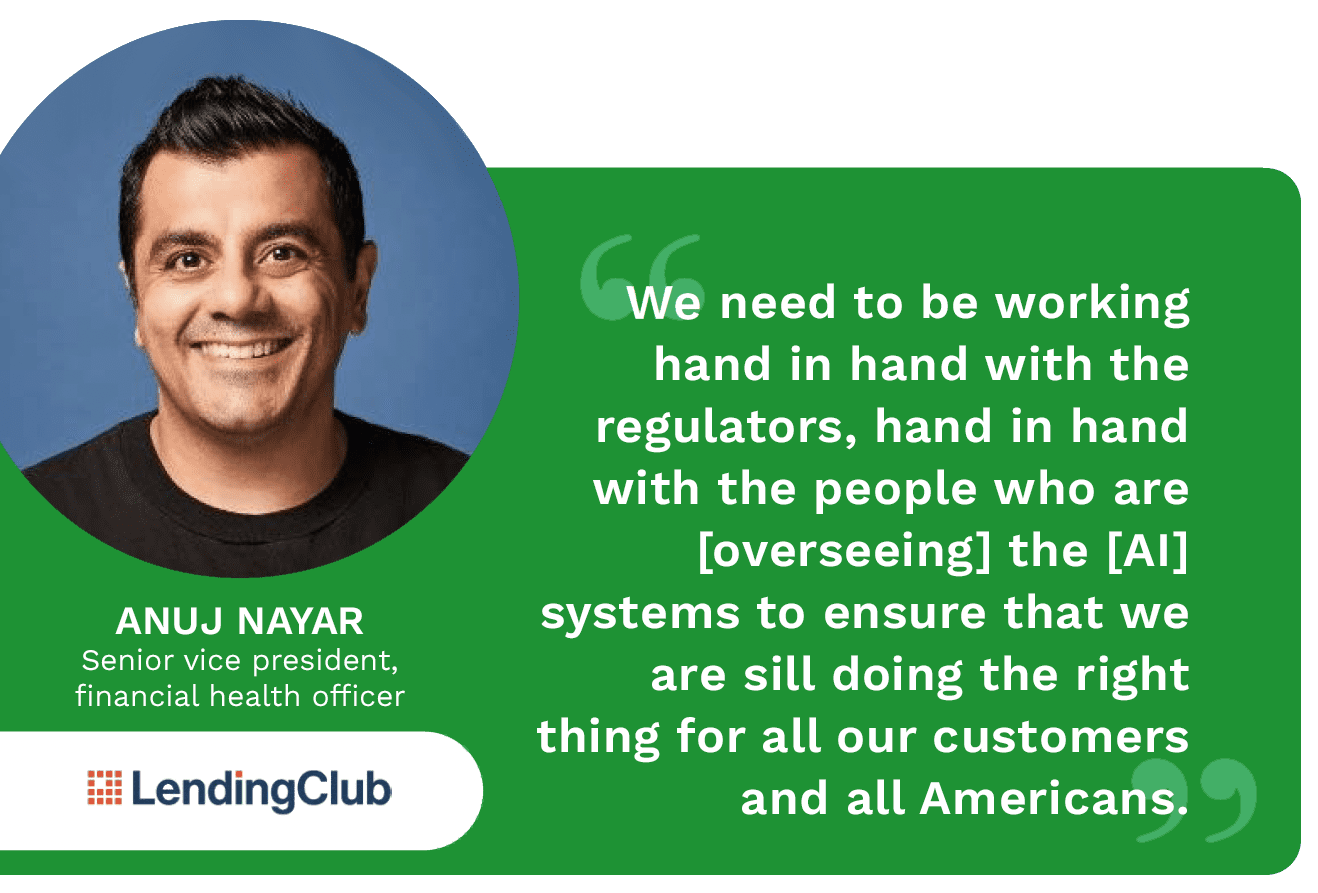PYMNTS speaks with Anuj Nayar, senior vice president and financial health officer at LendingClub, about how lenders seeking to offer faster payments can leverage AI to drive multiple sought-after gains.
—
 When LendingClub’s Anuj Nayar thinks about artificial intelligence (AI) and its role in financial services, he said he envisions the holy grail for which many FinTechs have long aimed.
When LendingClub’s Anuj Nayar thinks about artificial intelligence (AI) and its role in financial services, he said he envisions the holy grail for which many FinTechs have long aimed.
“How do you take that information and use it in a way … that will allow companies to include more people in the financial ecosystem who may have been excluded previously?” asked Nayar.
AI and machine learning (ML) can accelerate lending and lay the pathway for instant disbursements, streamlining the entire process. AI-powered algorithms analyze a vast amount of data and other relevant factors in real time, enabling decisions in minutes. LendingClub has been using AI and ML in this fashion for some time. The technology can process more than 150 billion cells of data and 2,000 different attributes, automating the majority of the company’s loan approvals and speeding up the delivery of its decisions.
AI algorithms also enable automated underwriting and fraud detection, while AI-powered chatbots and virtual assistants can provide personalized customer service. Along the way, LendingClub has continually increased the speed of its disbursements, now offering funds within 24 hours of approval via direct deposit.
“We can move much faster,” said Nayar. “We’re currently doing a little less than a billion dollars … of loan deliveries, and that takes a lot of sheer technology and manpower to make that stuff happen.”
Nayar pointed out how traditional financial institutions and FinTechs have already used these technologies to modernize many manual banking processes, but he cautioned that AI’s inherent power can be problematic for some if they do not proceed with a thoughtful plan.
“There have been multiple cases in the past [of] other companies that have maybe put the AI together, and even though they weren’t intending to have a type of disparate impact, [they had one] because they weren’t thinking through the ramifications,” Nayar said.
Examples of these disparate impacts might be pigeonholing certain consumers who apply from particular ZIP codes or other demographic categories as “good” or “bad” risks. Nayar explained that LendingClub has devoted much time and energy to producing an industry-wide framework to ensure responsible AI use and to avoid disparate impacts that do not meet industry guidelines such as the Equal Credit Opportunity Act. He said lenders must avoid building a “black box of technology” that conducts decision-making without transparency or that does not work to ensure fairness outside of statistical models.
“The piece that we always have to be very, very careful of when you start using new technologies is to ensure that you’re also not having any unintended consequences.”
LendingClub has intentionally built out its AI beyond automation to drive financial inclusion. Having a broader set of data from which to make decisions enables the lender to offer a loan to someone who may have been excluded from it in a traditional model or to price it lower if the additional data suggests that the applicant is a better credit risk.
“There’s a whole bunch of innovation that’s coming in,” Nayar said. “We’re seeing really interesting use of technology, and as long as we keep benefiting the customer at the center of what we’re doing and not adversely impacting any customer, it will continue to grow.”




